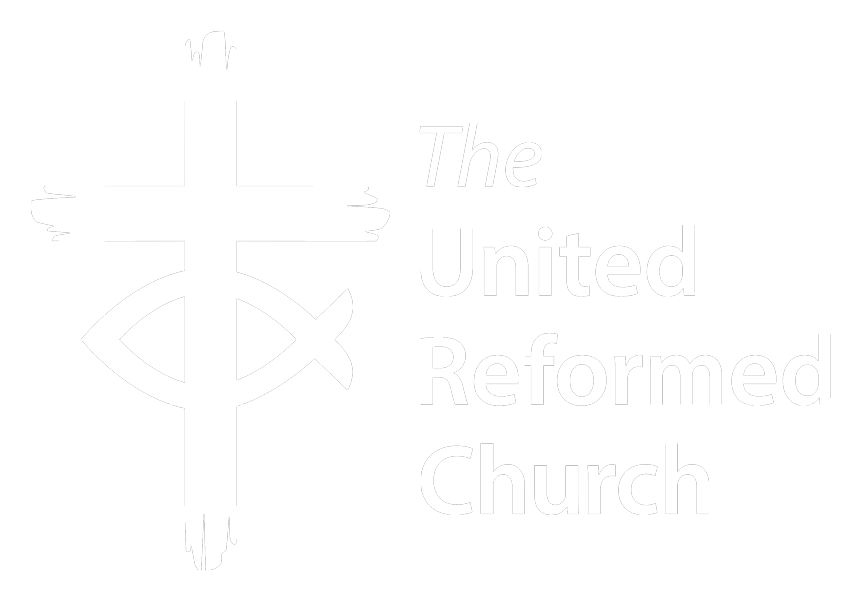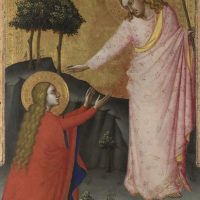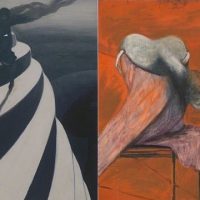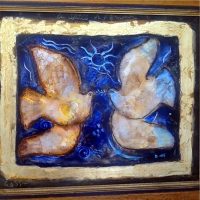The Holy Trinity: Fr. A. J. Thamburaj, SJ (India 1939–)
The grace of the Lord Jesus Christ and the love of God and the fellowship of the Holy Spirit be with you all.
2 Corinthians 13:14
We reformed churchers rely heavily on the written word in our teaching and reflection of scripture and all things theological. Sometimes things are better described through art, dance and poetry.
For many Christians the concept of the Trinity causes great confusion. Trinity Sunday is traditionally when your minister disappears on holiday!
This painting attempts to find understanding to this complex theological doctrine through mudras (Indian hand gestures) and colour. Thamburaj, a Jesuit priest often uses this format when preaching.
Green is the colour of creativity and fertility. Red is the colour of activity. Blue is the colour of the sea and sky, symbols of mystery and eternity. Yellow [saffron] is an auspicious and joyful colour in Indian custom.
The upraised hand is a symbol of protection in Indian art and dance. Representing the Father. Its message is ‘Fear not’. The fish denotes the ever-watching eye of God, for the eyelids of the fish never close.
The downward hand represents Christ. This gesture is common in Indian sculpture and dance. The red wound or stigmata reminds us that the risen Lord had to hang on a cross for our sakes.
The red hand symbolizes the purifying fire, the Holy Spirit. The spiral line represents the wind, connecting all three Persons in unity.
The doctrine of the Trinity, is as much about saying “we don’t know” as of saying “we do know.” By saying God is Three in/and One is to acknowledge that we shouldn’t expect God to fit neatly into our little categories. If he did, he wouldn’t be God at all, merely a god, a god we might perhaps have wanted: power, fame, riches… these define our lives in this world and God is beyond that.
Thamburaj tells us that our life is in the ever-present protecting, redeeming, purifying and empowering hands of the Triune God.
Rev. Jim Williams








